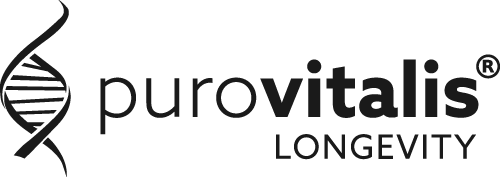
table of contents
Breathing is one of the most essential aspects of being alive. Still, many of us go through our day with shallow breaths without paying attention on how we in- and exhale. When was the last time you took a moment to focus on your own breathing?
When we are stressed and overwhelmed, we tend to breathe shallowly and irregularly. Stress also keeps the body in a constant “fight or flight” state, with the sympathetic nervous system continually active. Understanding the breathing science behind this can over time contribute to the development of anxiety and depression.
Studies show that breathwork can be an effective way to relieve anxiety and depression. Read on to discover the background of breathwork, its benefits, techniques, and how to get started. We’ll also share apps that can help you begin and expand your knowledge of everything related to breathwork.
Mental health in numbers
WHO, the World Health Organization states, approximately 301 million people globally suffer from some kind of anxiety disorder, while depression affects over 280 million people worldwide (2019). This underscores the urgent need for effective tools to manage stress and improve well-being.
The history of breathwork
Breathwork has its background across many different cultures. In India, Pranayama was part of yoga, focusing on breath control to boost life energy (prana) and overall health. In China, Qi Gong used breathing techniques to balance the body’s energy (qi) for longevity. Indigenous cultures also incorporated breathwork into spiritual and healing rituals just to mention a few.
In modern times, Leonard Orr developed Rebirthing Breathwork, and Stanislav Grof introduced Holotropic Breathwork in the 1970s. Both aimed at emotional release and achieving altered states of consciousness. Later, Judith Kravitz created Transformational Breath, emphasising its therapeutic benefits.
Today, breathwork has also become a popular element in wellness workshops, therapy, and even corporate settings, with more certified instructors and apps making breathwork accessible to all. Scientific research continues to highlight its benefits, establishing breathwork as a core tool in holistic health.
The science behind breathwork
A study published in Scientific Reports in January 2023 examined the effects of breathwork on stress, anxiety, and depression through a meta-analysis of several randomized controlled trials. The researchers compared participants practicing breathwork exercises with control groups who did not engage in such activities. The outcomes, based on self-reported levels of stress, anxiety, and depression, revealed small to moderate improvements in those practicing breathwork compared to the control groups. This evidence suggests that breathwork is a promising tool for managing mental health challenges and enhancing overall well-being.
Purovitalis’ experience with breathwork
At Purovitalis, we not only want to support people’s health with supplements; we aim to share knowledge about a healthy lifestyle in all aspects, as we believe in a holistic path to achieving longevity. This perspective on holistic health is one we share with our ambassador, Ivan van Eijsden, who is also a passionate breathwork coach.
Here is what he says about breathwork:
“Breathwork is a powerful tool that you can carry with you to address many things, such as stress, tension, and unresolved emotions. You can achieve a lot through your own breathing, and that inspires me.”
— Ivan van Eijsden, Breathwork Coach and Purovitalis Ambassador.
During a recent visit to our office, Ivan led an outside breathwork session, giving our team the opportunity to experience the transformative impact of these techniques firsthand. His session highlighted how breathwork can profoundly influence not only breathing patterns but also overall physical and mental well-being.
The benefits and impact of breathwork on health
Breathwork offers more than physical benefits; it also profoundly affects emotional and psychological well-being. Tailored techniques, such as deep breathing or intermittent hypoxia, can be practiced with different goals in mind, like reducing stress or enhancing emotional balance. By focusing on the breath, you will be able to process unsolved emotions and gain clarity, helping to release tension and past traumas.
On a biochemical level, breathwork activates the DOSE neurotransmitters—Dopamine, Oxytocin, Serotonin, and Endorphins. This release elevates mood, reduces stress, and promotes a sense of well-being and connection. Such effects support inner peace and a deeper reconnection with yourself, making breathwork a powerful tool for your emotional balance.
The different breathwork techniques
Breathwork is not a one-size-fits-all practice; within breathwork you will find a variety of techniques for different needs and goals. We have highlighted some of the most used ones here:
Holotropic Breathwork
Holotropic Breathwork is a powerful practice designed for deep emotional and psychological exploration. It uses a fast and deep breathing pattern maintained over an extended period, creating an altered state of consciousness. This altered state allows access to and processing of deep-seated emotions and past traumas, often leading to transformative experiences and insights. Because of its intensity, this technique should be practiced in a controlled environment with professional guidance to ensure safety and support.
4-7-8 Breathing
This method can be used every day. It’s commonly practiced before sleep to calm the nervous system or during moments when you feel stress in your body. You can also use it after intense physical activities to help the body settle down. With the 4-7-8 breathing method, you start by inhaling through your nose for 4 seconds, followed by holding your breath for 7 seconds, then slowly exhaling through your mouth for 8 seconds. Repeating this and getting into a rhythm creates a pattern that activates your parasympathetic nervous system. This can help you feel more relaxed and reduce stress levels. This technique is a practical way to reset and regain calm, whether you’re at home, at work, or on the go.
Box Breathing
Another technique that can help improve focus and manage stress through breathing is the Box Breathing method. This technique is often used by athletes because it helps control the body’s response to pressure, manage stress levels, and improve concentration. To practice Box Breathing, simply inhale through your nose for 4 seconds, hold for 4 seconds, exhale through your mouth for 4 seconds, pause for 4 seconds, and then repeat. This technique is also effective in high-pressure situations or before an important event, as it helps regulate breathing, lower heart rate, and induce a sense of calm.
Alternate Nostril Breathing
Alternate Nostril Breathing is a method for balancing your body and mind by regulating energy through a rhythmic flow that stimulates both the left and right hemispheres. This technique is effective for those looking to reduce anxiety and stress, as it activates the parasympathetic nervous system, inducing a state of relaxation. Alternate Nostril Breathing has roots in the Pranayama technique, which focuses on breathing through each nostril alternately without exhaling through the mouth. You perform this technique quite simply by first placing your thumb on your right nostril and inhaling deeply through your left nostril. Then, close your left nostril, briefly holding your breath with both nostrils closed. After that, perform the same procedure with the left nostril.
Box Breathing vs 4-7-8
To understand the different on two of the most common techniques of breathwork you will find the differences below in Box Breathing vs 4-7-8 Breathing:
| Category | Box breathing | 4-7-8 breathing |
| Purpose | Reduces stress, enhances focus | Promotes deep relaxation and calms the nervous system |
| How to practice | Inhale for 4 seconds, hold for 4, exhale for 4, pause for 4, then repeat | Inhale for 4 seconds, hold for 7, exhale for 8 seconds, then repeat |
| Effect on nervous system | Activates relaxation response, balances breathing | Slows heart rate, activates deep relaxation response |
| Main benefits | Quick stress relief, improved focus | Reduces anxiety, helps with sleep, lowers stress |
| Ideal for | Those needing a quick calming technique | Individuals seeking deeper relaxation, especially useful before bed |
| Duration | Typically 5-10 minutes, repeat as needed | Recommended for 4-8 cycles at a time |
Breathwork for beginners:
Now that we understand the benefits of breathwork, the big question is: how do you get started? First you will have to set your intentions and figure out what exactly you would like to achieve with breathwork. Is it for a better sleep or is it to reduce your anxiety? Or do you have some unresolved emotions triggering you that you would like to work through?
- Find the right technique: Find out which of the methods best fits your needs and intentions. For example, if you want to work through unresolved emotions with breathwork, you might start by finding a good coach in your area who can guide you through a Holotropic Breathwork session.
- Overcome the unknown: Staring breathwork can seem like a challenge as its unknown and for some its might even cause some fear and uncertainty. Its important to take small steps and give it time to get into this practice. You will have to trust the process and allow yourself to grow into it.
- Explore apps and resources: If you want guided support, there are several apps available, such as Calm and Headspace. These are apps for supporting your mental health in general by mediation but also breathing techniques. You can also explore SOMA Breath’s app, which offers a range of breathing techniques and educational videos. On the website you can also find certified coaches around the world through their website.
Purovitalis AURA app is also available for you to check your overall health score. The app includes a screening your mental health, anxiety and stress levels via 3 small steps with your smartphone. You will find the AURA app available here.
Final thoughts: Breathwork as a lifelong tool for balance
When stress takes over, shallow breathing often follows—fueling the very tension we want to avoid. But by shifting focus to slow, intentional breaths, we can calm the nervous system and ease both body and mind. Breathwork interrupts the stress cycle and brings clarity, balance, and resilience.
It’s a simple tool that doesn’t cost anything, and you always have it with you. Just a few minutes a day—whether at home, at work, or on the move—can help you feel more grounded, reduce anxiety, and support your long-term health. Breathwork isn’t just a practice; it’s a quiet reset button you can press whenever you need it. Breathe in. Breathe out. And return to yourself.
References
- Thubali, S. G., Saddeeq, M. G., Abu Hadi, R., Dibaji, K. A., Alluli, A. A., Mayyan, K. E., & Mannaa, K. M. (2024). Effect of breathwork on stress and mental health: A meta-analysis of randomized-controlled trials. International Journal of Scientific and Research Publications, 14(9). https://www.ijsrp.org/research-paper-0924.php?rp=P13213437

Track 50+ health metrics with AI-powered accuracy. Start your free trial today and take control of your wellness journey!

longevity tips best exercises nutrition diets healthy lifestyle
The art of living well a life that’s not measured by years alone, but by experiences, health, and joy!


 Skip to content
Skip to content









